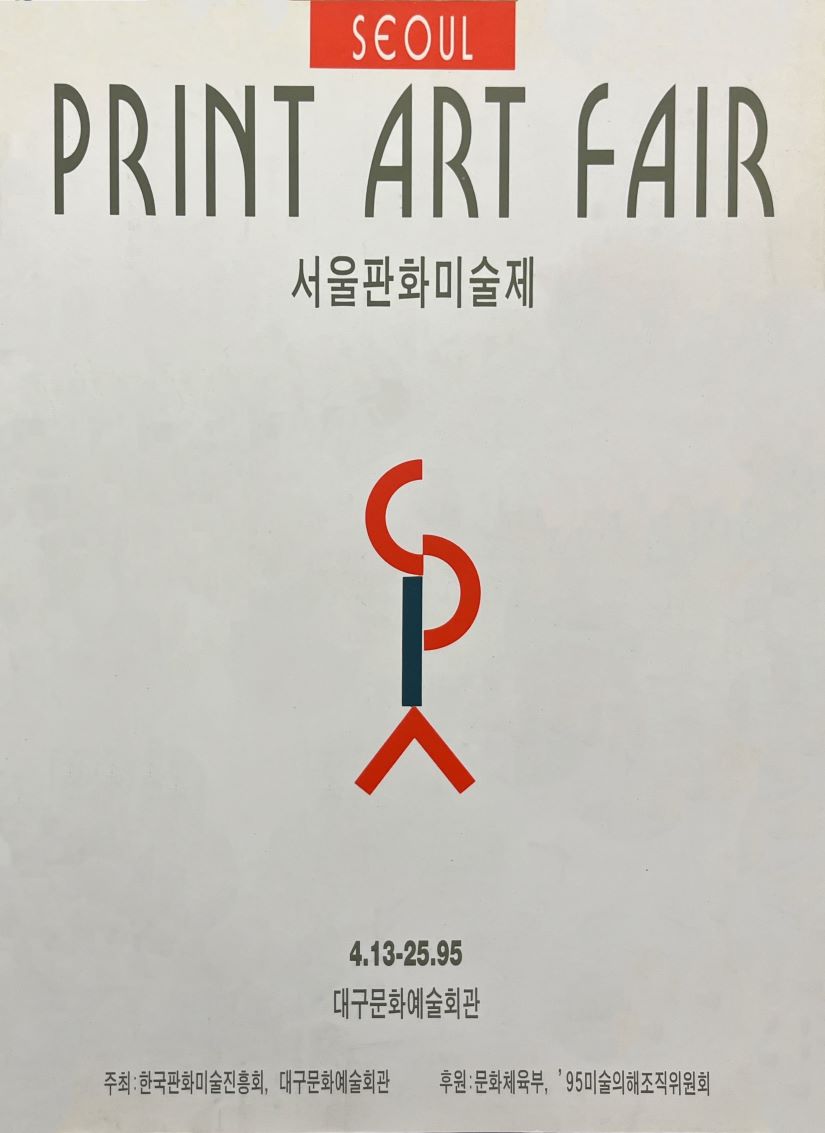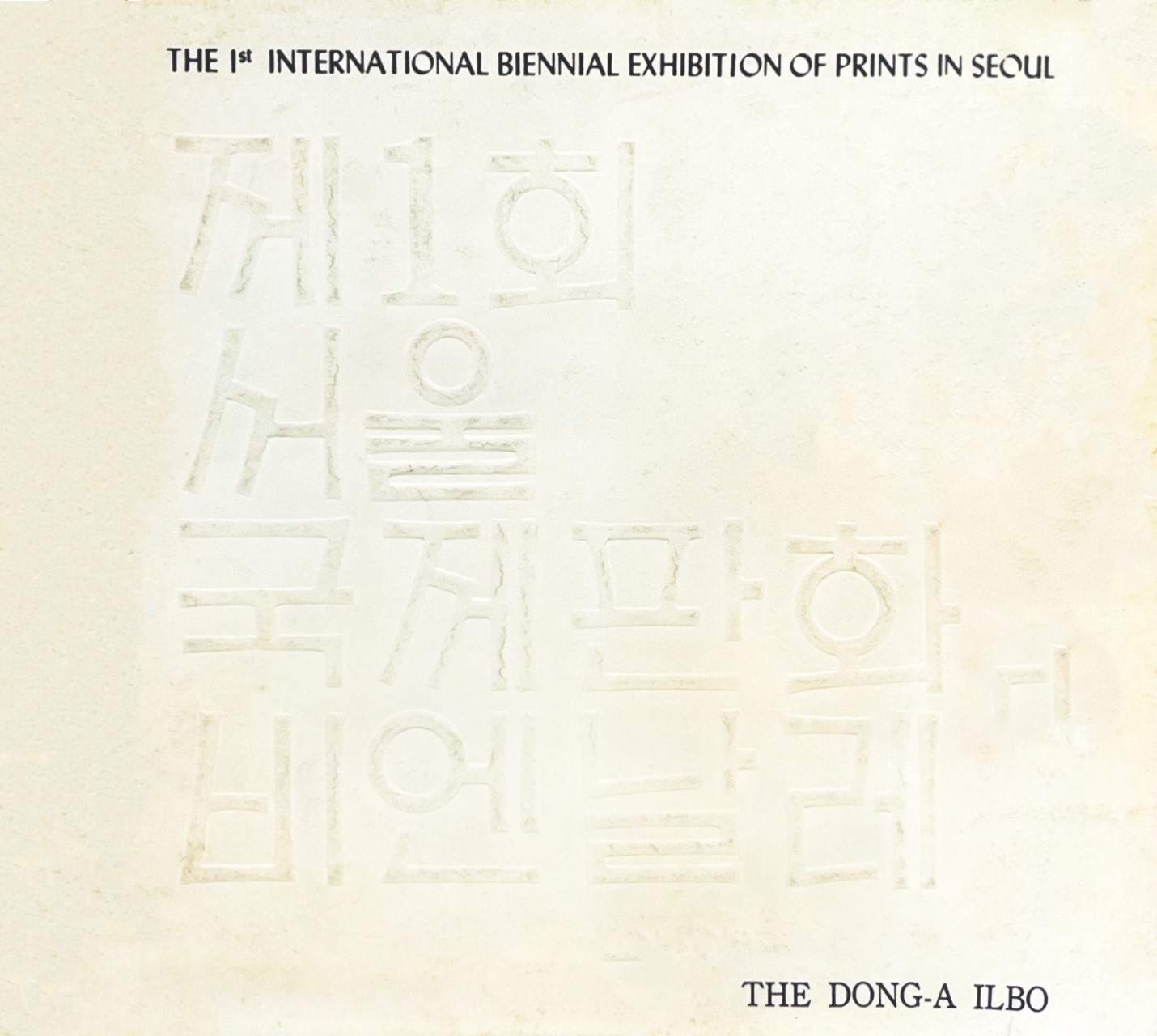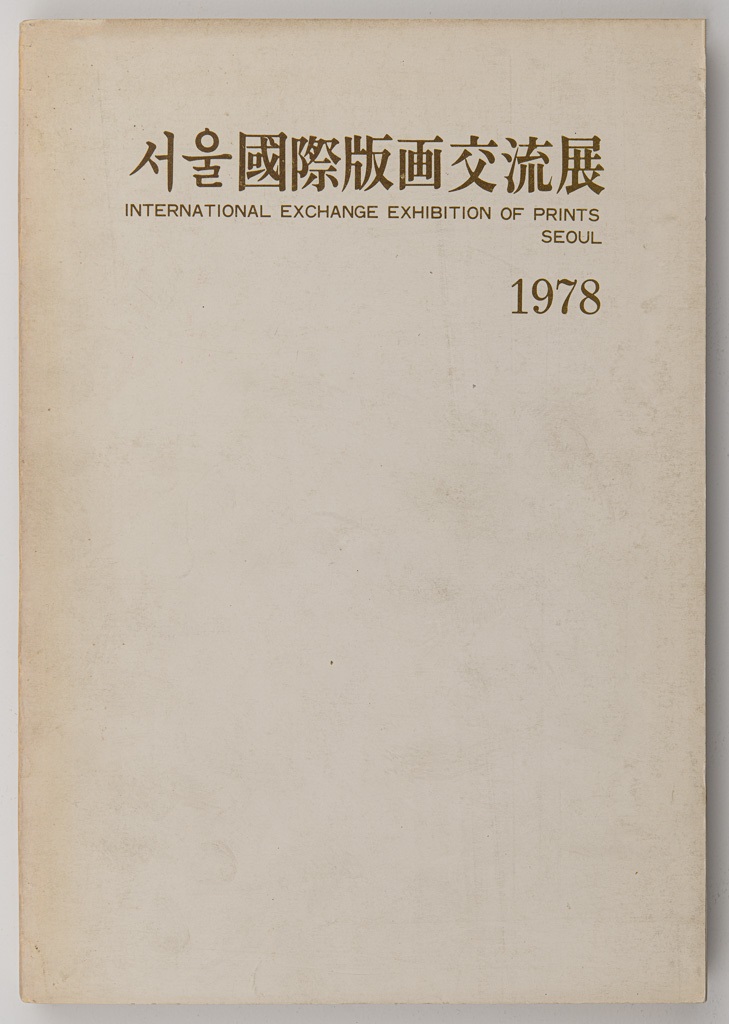
Seoul Print Art Fair, Catalog, 1995, MMCA Art Research Center Collection, Gift of Park Sungwoo
Seoul Print Art Fair
* Source: MMCA
Related
-

Seoul International Print Biennale
The Seoul International Print Biennale was an international print exhibition hosted by Dong-A Ilbo newspaper company from 1970 through 1996. Since it started as an event to celebrate the fiftieth anniversary of the founding of Dong-A Ilbo, it was called the Dong-A International Print Biennale until the third edition. After being held twice in the 1970s, in 1970 and 1972, respectively, the biennale was suspended for ten years due to the circumstances of Dong-A Ilbo. Resumed in 1981 with the third edition followed by the fourth edition in 1983, the biennale was held every two years from 1986 to 1996. From the first to the third editions, only four winners were selected under the name of Dong-A Grand Prize instead of being awarded according to a conventional rating system of grand, gold, silver, and bronze prizes. Among Korean artists, the Dong-A Grand Prize winners were Kim Sangyu (first), Song Burnsoo (second), Han Unsung (third), Yoon Miran (fourth), Kim Taeho (fifth), Kang Airan (sixth), Youn Myeungro (seventh), Ji Seokcheol (eighth), and Lee Inhyeon (tenth). From the fourth edition, the awarding system was changed back to a rating system with the addition of an excellence award. The commissioner system was introduced in the seventh edition. In the thirty-year history of the Seoul International Print Biennale, the third edition stands out. At the third edition, Still Life A and Still Life B by the invited artist Kim Kulim were rejected because they did not fit the nature of the biennale, which became a major issue. Kim’s works were three-dimensional creations made using printmaking techniques, which were far from the conventional concept of printmaking. As a result, the range of prints that could be exhibited was expanded from the fourth edition. As the first international exhibition solely hosted by South Korea, the Seoul International Print Biennale holds significance in contemporary Korean art history. It also helped to proactively change facets of international exchanges. Moreover, it spurred principal shifts in the development of contemporary Korean prints by providing an opportunity for Korean artists to explore overseas art trends at home and contributing to the spread of awareness of prints as a genre of art. Since the holding of the biennale, the number of artists attempting printmaking in Korea increased and the quality of printmaking grew significantly. This is why the Seoul International Print Biennale is viewed to have been a catalyst in the development of contemporary Korean prints.
-

SPACE International Print Biennial
The SPACE International Print Biennial as an international print exhibition organized by the SPACE Research Institute Co., Ltd. (currently SPACE Group) from 1980 through 2011. Since 1975, the art magazine SPACE had awarded the annual art award the “SPACE Prize” with the aim of promoting and developing contemporary Korean art. In its fifth year, in 1980, the award was limited to prints and changed to an international competition, leading to the First SPACE International Print Exhibition. Such change was made since prints were a convenient medium for transportation, and another intention for the change lied in expanding the SPACE Prize internationally. The first edition was a great success with 758 entries from 258 people in twenty-eight countries. The three judges, Lee Kyungsung, Youn Myeungro, and Ōshima Seiji, selected five grand prize winners, eleven excellence award winners, and 163 people for honorable mention. Among Korean artists, Jang Youngsook received a grand prize, Han Unsung, Chin Ohcsun, and Lee Inhyeon won excellence awards, and forty-one people received honorable mentions. The exhibition was originally planned as a one-time event, but drawing keen attention, it was changed to a biennial from the second edition and has been held for thirty years. Eligibility was restricted to Korean artists, and the recognition of rising artists enabled the biennial to serve as a gateway to the Korean printmaking scene. The regulation limiting entries to small works within ten centimeters high by ten centimeters wide contributed to the biennial's early success. However, participation gradually declined as the exhibition failed to accommodate the trend toward large-scale prints. In 2002, its organizers sought to make changes by abolishing dimension restrictions and renaming it the SPACE International Print Biennial. Nevertheless, as the concept of contemporary prints changed and interest in the competition waned, the biennial was discontinued after the sixteenth edition in 2011.







